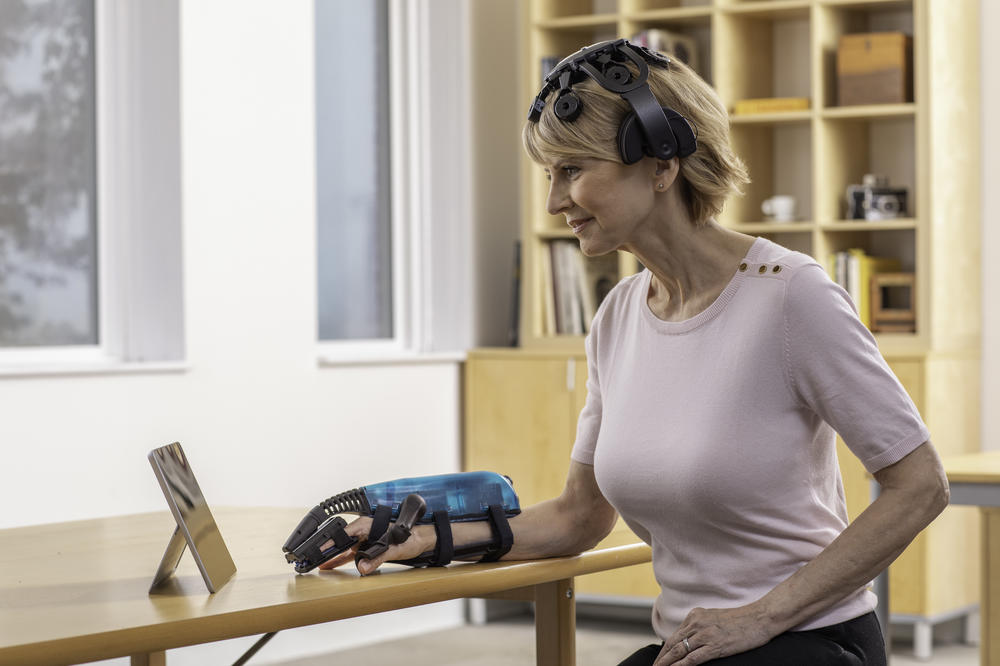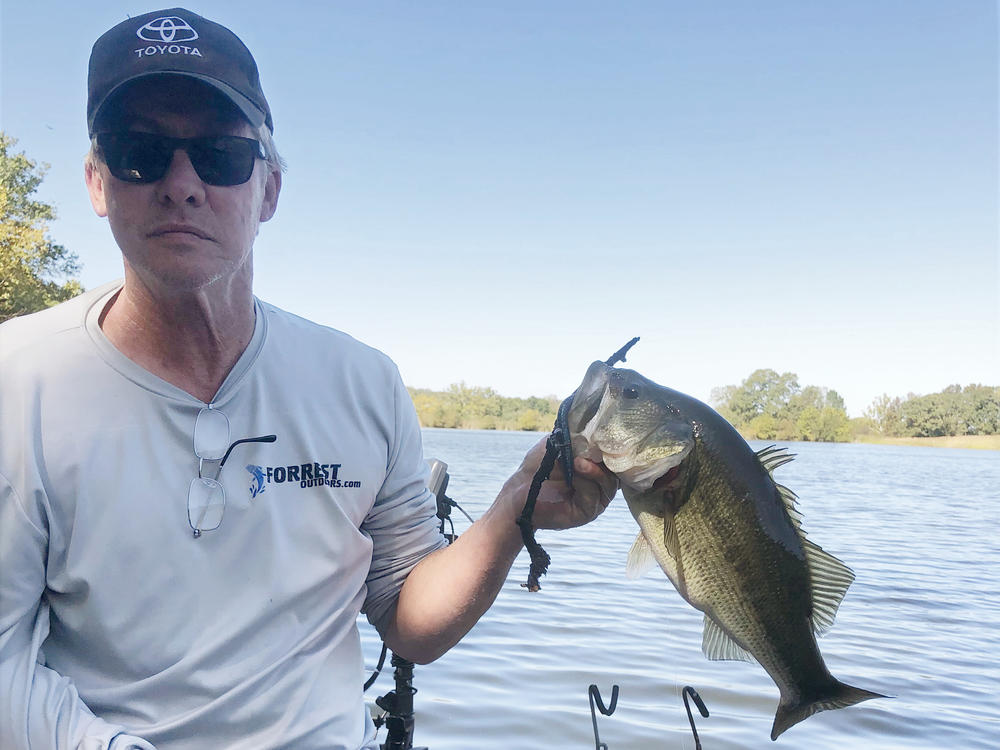Section Branding
Header Content
New Device Taps Brain Signals To Help Stroke Patients Regain Hand Function
Primary Content
People recovering from a stroke will soon have access to a device that can help restore a disabled hand.
The Food And Drug Administration has authorized a device called IpsiHand, which uses signals from the uninjured side of a patient's brain to help rewire circuits controlling the hand, wrist and arm.
The device can be used at home and offers stroke patients "an additional treatment option to help them move their hands and arms again," said Dr. Christopher Loftus of the FDA's Center for Devices and Radiological Health in a statement.
IpsiHand's authorization comes after the FDA reviewed results on patients like Mark Forrest, who had a stroke in 2015.
"We called 911 and off to the hospital I went," Forrest, who lives near St. Louis with his wife, Patti. "By the time I got there most of my right side was paralyzed."
After six months of rehabilitation, Forrest was walking again, but still had little control over his right hand. He struggled to pull on socks and button shirts.
What he missed the most, though, was fishing for bass in the rivers and lakes near St. Louis.
"I'm a die-hard fisherman," he says, "so that really hurt."
Forrest tried cutting down a fishing pole so he could hold it with his left hand. But his right hand wouldn't reel in the line.
So he kept working with a physical therapist, month after month, until he got really frustrated.
"I said, how much more am I going to improve," Forrest recalls. "And she says, 'I don't think you're going to improve hardly at all.' That was hard for me to take."
Then Forrest began talking to people at a company called NeuroLutions. It was founded by Dr. Eric Leuthardt, a brain surgeon at Washington University School of Medicine in St. Louis.
For many years, Leuthardt had been puzzled by something he often heard from patients who'd lost the use of hand after a stroke.
"If you talk to a stroke patient, they can imagine moving their hand," he says. "They can try to move their hand. But they just can't actually move it."
So Leuthardt had been looking for the source of those thoughts. And he found them in a surprising place: the side of the brain that had not been injured by the stroke.
Usually, the brain and body follow what's known as a contralateral model, where the right side of the brain controls the left side of the body. But Leuthardt's team had discovered that control signals were also present on the ipsilateral side – the same side of the brain as the limb being controlled.
Leuthardt's team built a system that could detect and decode those ipsilateral signals. Then they connected it to a device that would open and close a patient's disabled hand for them when they imagined the action.
But a mechanical hand wasn't Leuthardt's ultimate goal. He wanted to help his patients regain the ability to move their hand without assistance. And that meant answering a question:
"If somebody can generate a brain signal that's associated with their desire to move, and the exoskeleton moves it, so they're getting feedback, can we use this device that controls their affected limb to essentially encourage the brain to rewire?"
Early experiments suggested the approach worked. A video of one man with a disabled hand showed him initially trying and failing to grasp a marble and place it on a shelf.
"Then after six weeks of training, he can pick up that marble and he can move it on top of the shelf," Leuthardt says.
NeuroLutions tested the device on 40 patients for 12 weeks. All of them got better, and the results persuaded the FDA to authorize marketing of the device.
Now the company is gearing up to manufacture the system, says NeuroLutions CEO Leo Petrossian, a brain scientist with a business degree.
"I got involved specifically to help take something that was great in clinical studies and figure out how we can now bring this out to the million-plus people in the U.S. living with disability post stroke," Petrossian says.
The IpsiHand system consists of a headset that analyzes brain signals, a tablet computer, and a robotic exoskeleton worn over the wrist and hand. Unlike many rehabilitation aids, it can be used at home.
And it appears to help people who are no longer getting better with traditional rehabilitation.
The conventional wisdom is that most recovery from a stroke takes place in the first 90 days or so, says Petrossian. "So if it's day 100 and a person can't move their arm very well, that's how their arm's going to be for the rest of their life."
The IpsiHand study showed that doesn't have to be the case.
"If you spend an hour a day doing this exercise of thinking and visualizing opening and closing the hand, five days a week for 12 weeks, you retrain a different part of the brain to drive that previously disabled appendage," Petrossian says.
Mark Forrest, the die-hard fisherman, was no longer benefitting from traditional rehabilitation when he started using the IpsiHand, says his wife, Patti Forrest.
"But with this he was making great strides," she says. "Like all of a sudden he could touch his index finger with his thumb."
Mark Forrest decided to test his new dexterity by building a fishing boat. Dealing with tiny screws was still a challenge. And his friends kept joking that the home-made boat was going to sink.
"It didn't," he says. "I built a really nice one and it's got wheels on the bottom of it so it rolls in and out of the water."
Forrest launched the boat for the first time in March. And he discovered that he had regained the ability to reel in a fishing line with his right hand.
"We sat and fished for five hours on that boat," he says. "And probably every other cast, we were catching fish."
Copyright 2021 NPR. To see more, visit https://www.npr.org.


